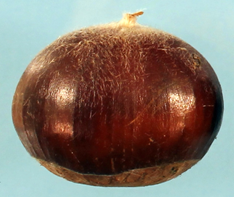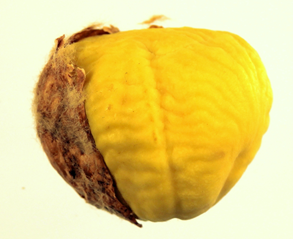Your cart is currently empty!
Storage & Handling
Chestnuts are highly perishable. The simplest rule for storing fresh chestnuts is: keep them moist and refrigerated. DO NOT FREEZE them unless they have been cooked or dried. At harvest, chestnuts are 50% water, the shells are shiny, and the kernels are firm and crispy. In this condition, chestnuts are alive and have a natural ability to ward off fungi that cause mold. A good way to store fresh chestnuts is in a perforated plastic bag in the refrigerator. They will keep like this for 3 months. High moisture chestnuts (firm to squeeze with shiny shells) sometimes develop surface mold on the shells that looks and smells bad but does not hurt the kernels inside. Such surface moldy chestnuts can be washed with dilute bleach or simply wiped off. Don’t discard surface moldy chestnuts without checking the kernels inside.
Whether they’re fresh off the tree or have been in storage, there are always some chestnuts that are moldy, rotten, insect damaged, or broken. We do our best to remove these bad nuts as each chestnut is inspected immediately before bagging. However, some defects are not visible on the surface, and some deterioration can occur after inspection. Slightly dried chestnuts are sweeter and easier to peel but are also more susceptible to mold. Such chestnuts can look fine outside but be moldy inside. With proper care very few chestnuts will end up going bad.

A fresh chestnut, firm and shiny

